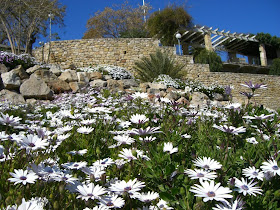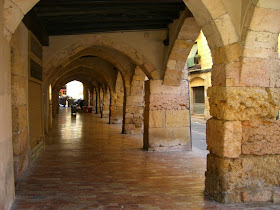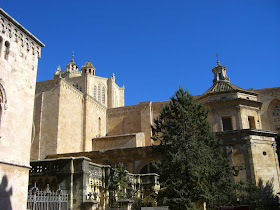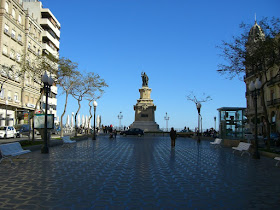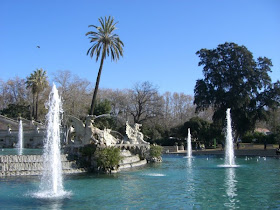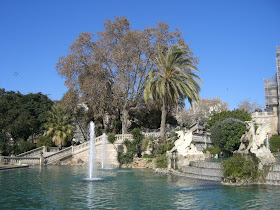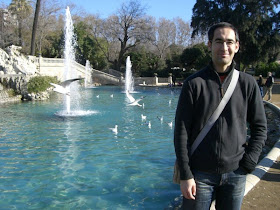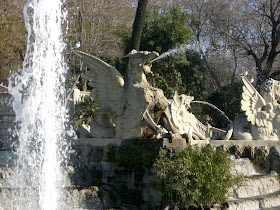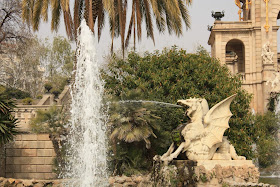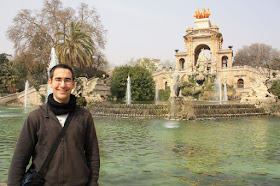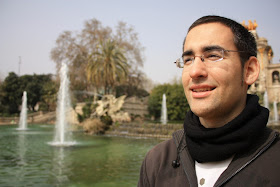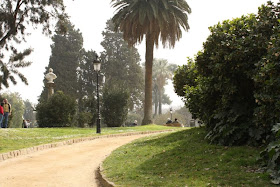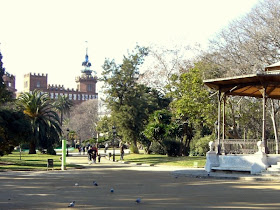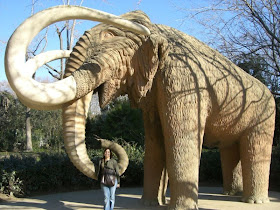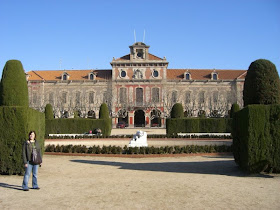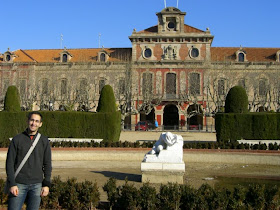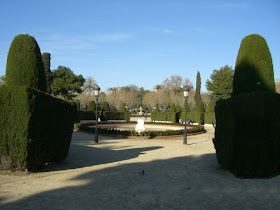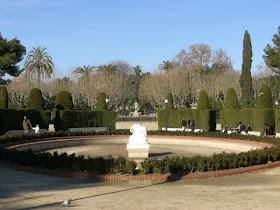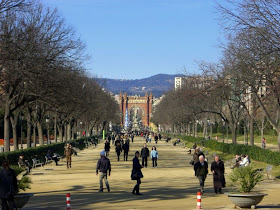In march, when the spring was about to come and the weather was becoming better, we spent a lovely and really sunny weekend in Salou and La Costa Daurada. We stayed in a comfortable hotel in Salou and, from here, we visited the following beautiful places:
Day 1:
- Ermita de Santa Maria de la Roca (Mont-Roig del Camp)
- Pratdip
- The modernist town of Reus
Day 2:
- Beach of Salou
- Ancient Roman Tarraco
- Tarragona old quarter
Hotel in Salou
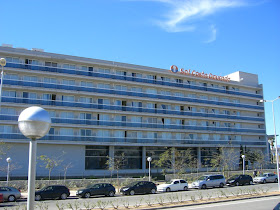
This is the hotel Sol Costa Daurada, where we stayed the weekend we spent in Salou and surroundings. The weather was lovely during all the weekend. That days seemed actually summer days
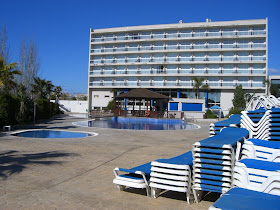
This hotel has an outdoor swimming pool and an indoor one. We enjoyed a lot the indoor swimming pool in the evenings
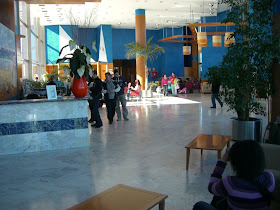
I really liked the colourful and really spacious hall. You can see on the right corner another person who loved this hall too because she was also taking a photo in front of me :)

The view from our room in the second floor was quite interesting to relax our sight. In the background, on the left, it can be seen one of the most exciting attractions of Port Aventura funfair: a 100 meters free fall
Mont-Roig del Camp (Mare de Déu de la Roca)
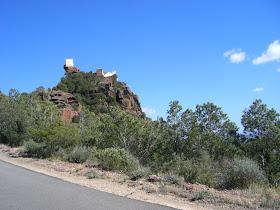
After a wonderful all-you-can-eat breakfast in the hotel, we drove to the chapel Mare de Déu de la Roca, located on the top of a hill in a nearby small town called Mont-Roig del Camp
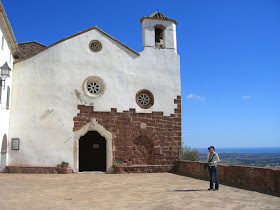 The chapel Mare de Déu de la Roca was quite small but I really enjoyed the view from the square. From here, we had beautiful views of the sea and some towns like Salou and Cambrils. Because of the wind we suffered up there, we couldn't stay much time, but the necessary time to take some pictures :)
The chapel Mare de Déu de la Roca was quite small but I really enjoyed the view from the square. From here, we had beautiful views of the sea and some towns like Salou and Cambrils. Because of the wind we suffered up there, we couldn't stay much time, but the necessary time to take some pictures :)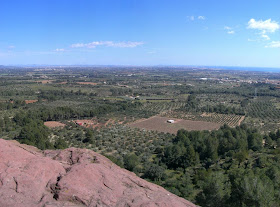 From here we could see Salou and Cambrils and the petrochemical industry near Reus. We were really lucky to have such a sunny day because the view was really lovely covered with the sunshine
From here we could see Salou and Cambrils and the petrochemical industry near Reus. We were really lucky to have such a sunny day because the view was really lovely covered with the sunshine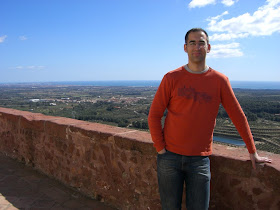 Another picture from this square swept by the wind. I even though that my light glasses could fly away
Another picture from this square swept by the wind. I even though that my light glasses could fly away From a nearby point we can enjoy an overall view of the place where we were spending that morning
From a nearby point we can enjoy an overall view of the place where we were spending that morning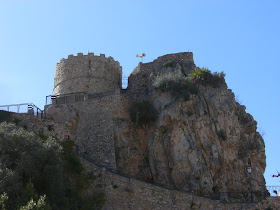
From this little church in Mont-Roig del Camp we drove to Pratdip, a village located a few kilometers. This picture shows the remains of a Castle in the highest point of this small town
 And in the surroundings of Pratdip, beside the road, another chapel appears, called Sta. Marina
And in the surroundings of Pratdip, beside the road, another chapel appears, called Sta. Marina Reus
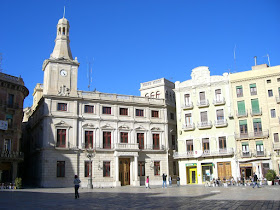
From Pratdip we went back to the north to visit Reus, the most important town of the province of Tarragona together with the city of Tarragona. In this picture, the city hall of Reus
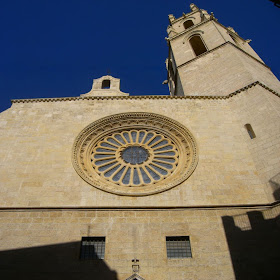
Near the City Hall is located the church of Reus, in the heart of the old quarter of this town
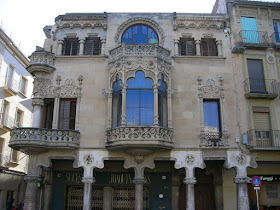
One of the best cultural activities to do in Reus is a walk called Modernist route. While you walk you can see Modernist facades like this one of the Navas House, located in the City Hall Square
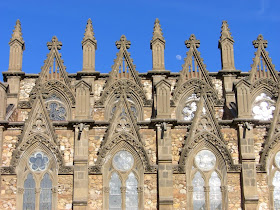 This picture taken from the market of Reus shows the side façade of an almost neglected church. This façade reminded me the side façade of the main nave of the Sagrada Familia in
This picture taken from the market of Reus shows the side façade of an almost neglected church. This façade reminded me the side façade of the main nave of the Sagrada Familia inBarcelona
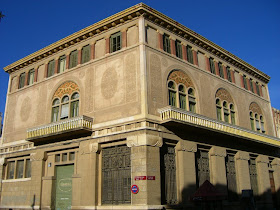
Next to the Sant Joan Hospital in Reus we saw this house called Gasull House, which was designed by the well-known modernist architecht Lluis Domènech i Muntaner
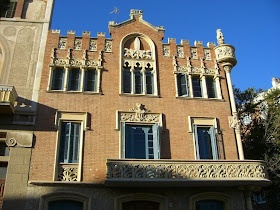
Next to the Gasull House is the Rull House, also designed by Lluis Domènech i Muntaner, one of the most important modernist architechts
Sunday, 7th March 2009
Salou Beach
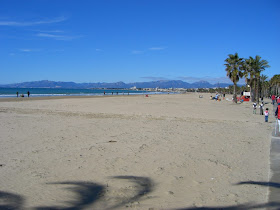
The beach of Salou in another really lovely day. It was incredibly pleasant to feel the sunshine warming my face again
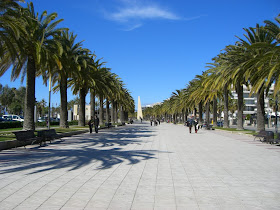
The Salou promenade flanked by palm trees
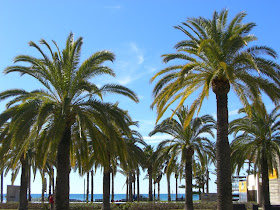 More Palm trees which give a Caribbean aspect to the Salou beach
More Palm trees which give a Caribbean aspect to the Salou beachTarragona
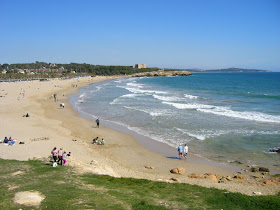
After a brief promenade in Salou we drove to Tarragona to visit the roman remains of the ancient city of Tarraco. We parked our car next to the Arrabassada beach and from here we walked twenty minutes until we reached the roman amfitheater
Ancient Roman Tarraco
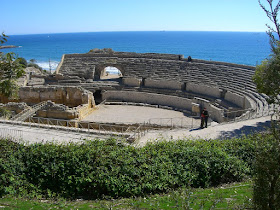
The roman Amfitheater is one of the best preserved monuments of the ancient Tarraco. This building is one of the three entertainment buildings of an important roman city together with a Circus and a Theater. In fact, Tarraco was the capital of one of the imperial provinces of the Roman Empire
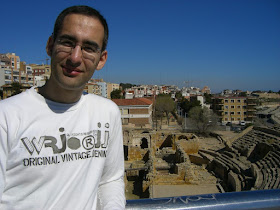 The amfitheater has an elliptical floor. The arena, the place where the spectacle took place, is 62,50 meters long and 38,50 meters wide. It can be seen in the arena the remains of a romanesque church, called Santa Maria del Miracle, built during the XII century
The amfitheater has an elliptical floor. The arena, the place where the spectacle took place, is 62,50 meters long and 38,50 meters wide. It can be seen in the arena the remains of a romanesque church, called Santa Maria del Miracle, built during the XII century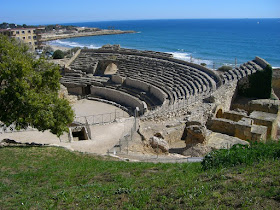 The amfitheater was located outside the walls, but quite close to the city and to the Augusta Way. It was also located close to the beach, where the animals used for the fights were unloaded
The amfitheater was located outside the walls, but quite close to the city and to the Augusta Way. It was also located close to the beach, where the animals used for the fights were unloaded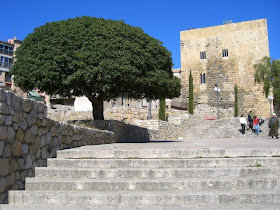 The Praetorium is a Roman-era tower that once housed the stairs that connected the lower city to the provincial forum by way of the circus, to which it is connected by means of underground passageways. It stands at one of the corners of the vast rectangle of the provincial forum square. In the 16th century, it was transformed into a palace for the monarchs of the Catalan-Aragonese crown. It was subsequently used as a prison
The Praetorium is a Roman-era tower that once housed the stairs that connected the lower city to the provincial forum by way of the circus, to which it is connected by means of underground passageways. It stands at one of the corners of the vast rectangle of the provincial forum square. In the 16th century, it was transformed into a palace for the monarchs of the Catalan-Aragonese crown. It was subsequently used as a prison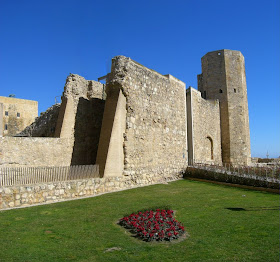 Located between Via Augusta and the provincial forum, Tarragona's circus was once used to hold horse and chariot races. An elongated structure measuring 325 by 115 metres, its original capacity has been estimated at 30,000 spectators
Located between Via Augusta and the provincial forum, Tarragona's circus was once used to hold horse and chariot races. An elongated structure measuring 325 by 115 metres, its original capacity has been estimated at 30,000 spectators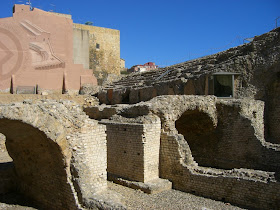 The complex was built in the 1st century. Unusually, it was located within the city limits and is thus endowed with several atypical architectural features. It is considered one of the best-preserved circuses in the West, although some of the original structure remains hidden under old 19th-century buildings
The complex was built in the 1st century. Unusually, it was located within the city limits and is thus endowed with several atypical architectural features. It is considered one of the best-preserved circuses in the West, although some of the original structure remains hidden under old 19th-century buildingsTarragona Old Quarter
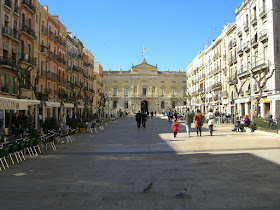
The city hall of Tarragona at the end of a square. An ideal place to drink something under the warming sunshine

Dedicated to Saint Mary, the city's cathedral was built on approximately the same site of what was once the Roman temple. Its construction began in the 12th century in the Romanesque style and continued throughout the Gothic period. The building was consecrated in 1331. The soaring entrance and rose window of its façade are one of the city’s most emblematic images
Gothic archs next to the Cathedral of Tarragona
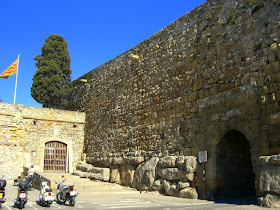 In the 2nd century B.C., a great wall was built around Tarraco, delimiting the municipal boundaries. The wall originally ran some 3,500 metres. Today, approximately 1,100 metres remain, bordering present-day Tarragona's Old Quarter. The walls are the oldest Roman construction still conserved outside Italy
In the 2nd century B.C., a great wall was built around Tarraco, delimiting the municipal boundaries. The wall originally ran some 3,500 metres. Today, approximately 1,100 metres remain, bordering present-day Tarragona's Old Quarter. The walls are the oldest Roman construction still conserved outside Italy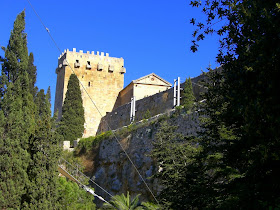 Special attention should be paid to the Archbishop's Tower, which underwent considerable alterations in the Middle Ages, and the Minerva Tower, which is the site of the oldest Roman sculpture and inscription in the Iberian Peninsula
Special attention should be paid to the Archbishop's Tower, which underwent considerable alterations in the Middle Ages, and the Minerva Tower, which is the site of the oldest Roman sculpture and inscription in the Iberian Peninsula
The Rambla Vella is a wide promenade which links the Imperial Tarraco square to the Mediterranean sea. This boulevard ends in a viewpoint called Mediterranean Balcony
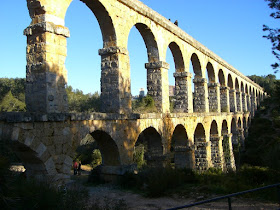
In the forest a few kilometers north of the city, a Roman arch bridge carrying an aqueduct has been preserved
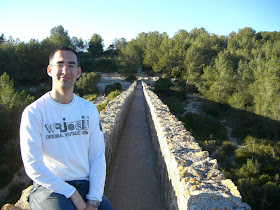
It is known locally as "Devil's Bridge" and is a magnificent aqueduct, which spans a valley about 4 km north of the city. It is 217 m in length, and the loftiest arches, of which there are two tiers, are 26 m high
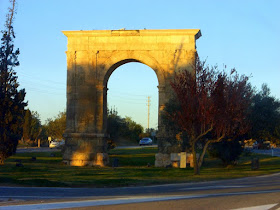 Driving to Barcelona we could see the Arc de Berà. This arch is a triumphal arch some 20 km north of the city of Tarragona. It stands on the line of what was the Via Augusta, now the N-340 road.
Driving to Barcelona we could see the Arc de Berà. This arch is a triumphal arch some 20 km north of the city of Tarragona. It stands on the line of what was the Via Augusta, now the N-340 road.Other interesting places to visit or things to do in la Costa Daurada are:
- El Delta de l'Ebre (Ebro Delta)
- The beautiful beaches and coves of L'Ametlla de Mar
- Miami Playa
- Castle of Tamarit
- Roc de Sant Gaietà
- The medieval village of Montblanc
- The Cistercian monasteries of Poblet and Santes Creus
- The medieval village of Siurana
- The medieval village of Miravet
- The Iberian citadel of Calafell
- Playing golf in Golf Costa Dorada Tarragona
Finally, cliking on the next link you will find links to other beautiful villages and places of Catalunya.

